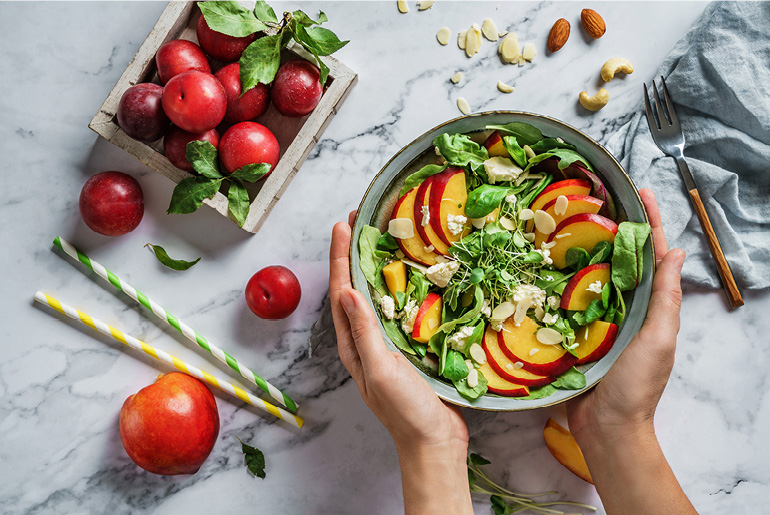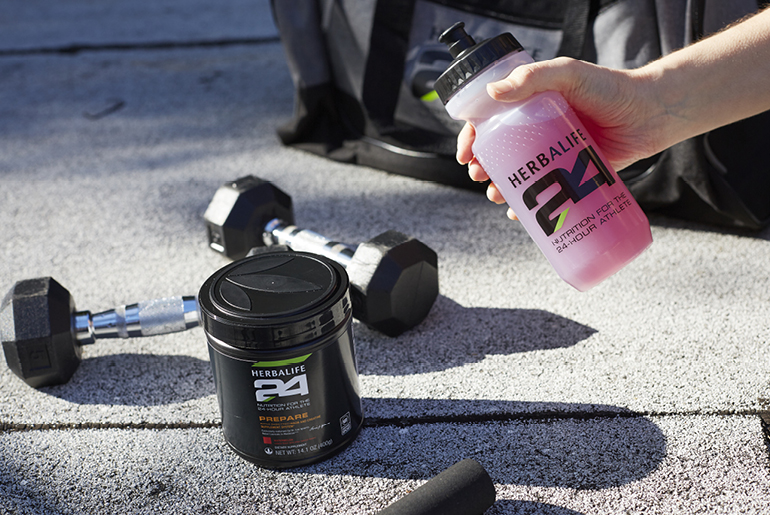Portion Control For Weight Loss: 8 Tips On Serving & Plating Food

Author: Susan Bowerman, M.S., RD, CSSD, CSOWM, FAND – Sr. Director, Worldwide Nutrition Education and Training
Did you know the way we serve and plate our food influences how much we eat? If you eat a healthy diet, you might think that it would be hard to overeat. But in my experience, I’ve seen plenty of people who fill their plates with healthy foods, but they struggle with their weight because they simply eat way too much.
Portion control matters if you’re trying to lose weight or keep your calories in check.
In fact, according to a meta-analysis published on Obesity Research & Clinical Practice, the use of portion-controlled-plates among study subjects resulted in significant reductions in body weight, body mass index, and waist circumference.
The idea that “your eyes are bigger than your stomach” really applies here. When you’re loading up your plate, you’re relying on what you see to determine your portion, which is often a lot more than what you can – or should – eat.
There’s also a difference between a “serving” and a “portion”.
Servings & Portions
Serving sizes are what you see on the nutrition facts panel of food packages – but that may or may not reflect the amount that you actually eat. We are programmed to finish whatever is put in front of us, whether it’s a lot or a little. That’s your “portion.” And, often, the only way you know that you’re finished eating is when the empty plate tells you, “I’m done.”
Here are a few habits that can help you with portion control when serving and plating your meals:
1. Choose Smaller Serving Containers
From soup to nuts, any dish served from a large container could encourage you to eat more of it. According to the University of Cambridge, people consume more food and drink when offered larger-sized portions, packages, or tableware than smaller-sized versions. So, to manage your portions, try serving from a smaller bowl or saucepan.
2. Opt for Smaller Utensils
You’ll serve yourself more if you use a large serving spoon than you will from a smaller one, so be aware of how much you’re putting on your plate. “Just a couple of scoops” of anything can add up really fast when the scoop is the size of a shovel.
3. Consider the Size of Your Plate
When you use a smaller plate, it looks as if it holds more food – which means your eyes are telling you that this plate of food will be more filling. So, if you’re trying to cut calories by cutting portion sizes, trim the size of your plate, too.
4. Consider the Height and Width of Your Drinking Glasses
If you’re trying to curb your intake of liquid calories, consider the size and shape of the glass you use. Tall skinny glasses appear to hold much more than short, wide ones – which fools your eyes into thinking that your stomach will be getting more.
5. Plate up in the Kitchen Instead of at the Table
Serving food family style makes it easy for everyone to help themselves, which is why it’s not such a good idea if you’re trying to control portions. With serving dishes on the table, it’s too easy to have “just another spoonful.” Instead, portion out your meal in the kitchen. The only serving dishes you should keep on the table are those holding low-calorie veggies and salads.
6. Consider Your Plate Colour
The colour of your plate can affect your ability to visualise how much you’re eating. When there’s a large contrast between the colour of the food and the colour of the plate – picture a dark square of chocolate cake on a bright white plate – it’s easier to visualise the portion, which makes it easier to control how much you are eating.
7. Eat Lower-Calorie Foods First
When you’re hungry and serving yourself a plate of food, you’re likely to serve yourself more of the highest-calorie foods that are available, and you’re also likely to dig into them first once you sit down to eat, meaning you’re going fill up on those high-calorie foods first! If this sounds like you, try digging into your salad or veggies first – that way, you’ll start to fill up with the lowest-calorie items first, which leaves less room for the heavier stuff.
8. Use Your Plate as a Guide
Your plate could also serve as guide on how to divide up the components of your meal. The recommendations below are rough estimates, since each person has unique dietary needs, but they can be a useful guide – especially when you’re eating in a restaurant. For example:
• Vegetables or salad: about ½ of your plate
• Protein: about ¼ of your plate
• Complex Carbs (such as whole grains and starchy vegetables): about ¼ of your plate.





